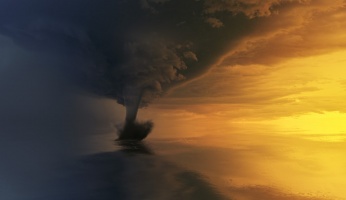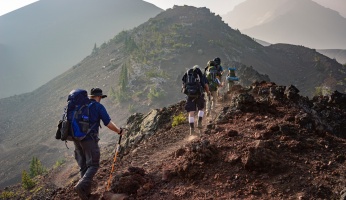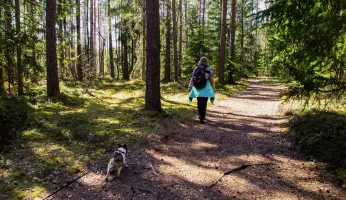Forest Fires: How to Protect Yourself From Wildfires
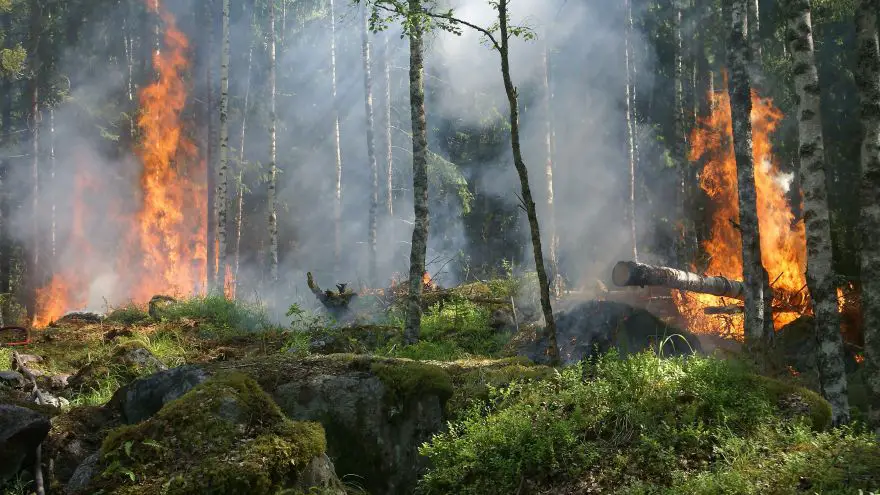 Forest Fires: How to Protect Yourself From Wildfires
thegearhunt.com
Forest Fires: How to Protect Yourself From Wildfires
thegearhunt.com
What happens if you are camping or backpacking and come across a wildfire that is moving fast? What should you carry? What should you do?
Predicting a season for wildfires can be tricky, but they do happen every year. They are incredibly unpredictable, but here are just a few tips in the event that you are heading out to the backcountry tinderbox this year.
Pocket Weather Alert Radio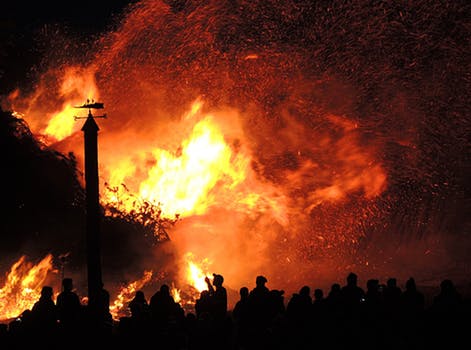
Believe it or not, situational awareness does matter…quite a bit.
Accidental fires and arson do happen, without question. However, most wildfires, especially those happening in the summer, are the result of lightning. Because of this, it can be more than a bit helpful to know what the weather is supposed to be like. Anytime you are headed out to the wilderness you should check your local weather before you go. You might also want to pack a pocket weather alert radio that has both AM and FM bands, and that will monitor the weather channel broadcasts from NOAA. This will allow you to know when extreme weather, including lightning, might be headed for you.
Fire Shelter
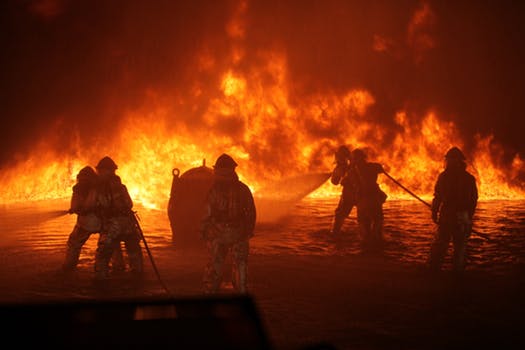 If you truly want to protect yourself from a wildfire, it is critical to avoid them. Equipment should only be used as your last option. However, in the event of lightning or another source of ignition starting a fire between where you are and the trailhead, a paper or digital map might be the most important thing you can have. You always need to find an alternate route so that you will avoid being stuck in a dead-end canyon or caught against a slope that is too steep to climb.
If you truly want to protect yourself from a wildfire, it is critical to avoid them. Equipment should only be used as your last option. However, in the event of lightning or another source of ignition starting a fire between where you are and the trailhead, a paper or digital map might be the most important thing you can have. You always need to find an alternate route so that you will avoid being stuck in a dead-end canyon or caught against a slope that is too steep to climb.
That being said, a fire shelter, like the ones made by Anchor Industries, might be helpful as a last resort. They can be expensive and weigh about 5 pounds. They also take a bit of training if you want to be able to use them properly.
Firefighters in wildfire country pack special shelters in the event they are overtaken by a fire, but these aren’t too practical for hikers and backpackers. They also carry things like Pulaskis – which are a sort of combo axe and pick, shovels, wear hard hats, and clothing made from Nomex. Again, not practical for recreational backpackers and hikers.
Common Sense
When all is said and done, there really is nothing like common sense. You need to look at wildfires the same way that you would an avalanche. They are simply a force of nature that you really shouldn’t mess with.
This means that you don’t take that trip into areas of high risk when there is the threat of bad weather. Also, don’t deliberately make the situation worse by lighting your toilet paper while trying to get your campfire lit, tossing lit cigarette butts, etc.
Additionally, if there is a fire in your area, don’t stick around to watch it. Get as far away from it as you possibly can and call for help. Wind-driven, fast moving fires can outrun you, especially when you are moving uphill across uneven terrain or are tired.
Now, let’s spend a bit of time discussing how to protect your home from a fire – a wildfire or otherwise.
Tips for Making Your Home Safe
Access
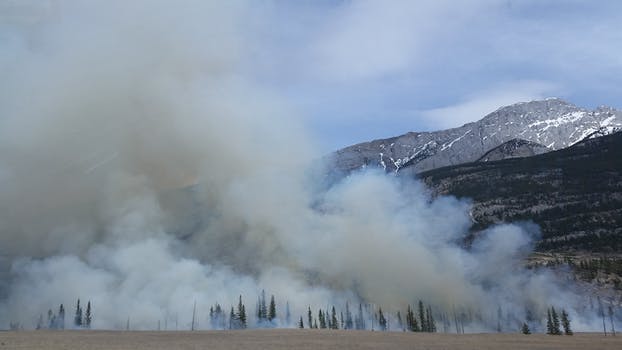 Your home’s access will affect both how firefighters are able to protect and reach your home as well as how other types of emergency vehicles are able to find and get to your home. It begins with signage. The local fire department might know where your house is located, but any departments that might need to help them won’t be able to easily find your house if it isn’t visible from the street.
Your home’s access will affect both how firefighters are able to protect and reach your home as well as how other types of emergency vehicles are able to find and get to your home. It begins with signage. The local fire department might know where your house is located, but any departments that might need to help them won’t be able to easily find your house if it isn’t visible from the street.
In the middle of summer, when all of the trees and bushes are full of lush greenery, go out to the street and see if you are able to read your address. If this isn’t possible, you might need to move the numbers or make them larger. Keep in mind that there might be times when darkness or smoke might make it more difficult to see it clearly.
Once the firefighters have located your home, they will need to have the ability to get to it. If you have a driveway that isn’t 150 feet in length, they will be able to reach it right from the street. Your drive needs to be a minimum of 12 feet in width and be clear of any branches at least 14 feet high. Driveways that are longer will need to have a width of 20 feet. The surface of your drive should be a firm, all-weather type of surface and any culverts or bridges need to be rated to a minimum of 10,000 pounds. If you have a long and curvy drive, the curves should be gentle in order to be able to accommodate those larger emergency vehicles. Another thing long drives need is a turnaround that is close to the house. Without access that is good, and an escape route, the firefighters won’t put themselves in danger if it becomes a question of the home’s safety versus theirs.
So, is your drive isn’t wide enough, widen it to a minimum of 12 feet and prune any branches hanging over it so that there is at least 14 feet of clearance. If your drive is longer than 150 feet, widen it to a width of 20 feet. Additionally, ensure that the drive has a surface that is solid and that any culverts and/or bridges are able to accommodate the weight of fire trucks.
If you have a drive that is longer than 150 feet, ensure that there is a large area for the trucks to turn around near your home. The radius of this turn around should be a minimum of 30 feet.
Site
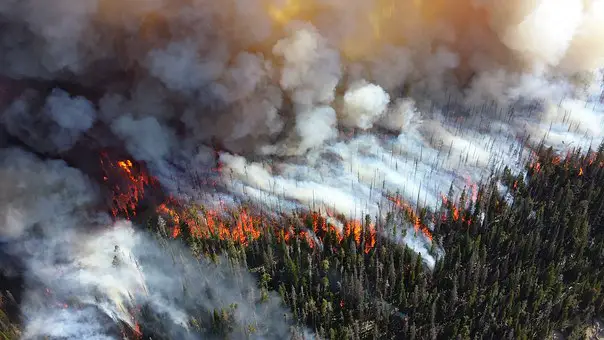 The actual property or site where your home is located is actually more critical than any access to it. In the more rural areas, fire departments tend to be incredibly understaffed when it comes to dealing with large wildfires where there are quite a few homes in danger. Your home might just need the ability to stand without protection from firefighters. The way that your home is situated on the property will determine whether or not it will be able to survive on its own and whether or not it can be defended by firefighters. The key area is the 30 feet that encircles the home. This is what is known as the home defensible zone. If you have any sort of outbuildings in this area, the defensible zone will need to extend to the 30 feet surrounding those buildings too. Inside this area, anything that is flammable will need to be either modified or removed.
The actual property or site where your home is located is actually more critical than any access to it. In the more rural areas, fire departments tend to be incredibly understaffed when it comes to dealing with large wildfires where there are quite a few homes in danger. Your home might just need the ability to stand without protection from firefighters. The way that your home is situated on the property will determine whether or not it will be able to survive on its own and whether or not it can be defended by firefighters. The key area is the 30 feet that encircles the home. This is what is known as the home defensible zone. If you have any sort of outbuildings in this area, the defensible zone will need to extend to the 30 feet surrounding those buildings too. Inside this area, anything that is flammable will need to be either modified or removed.
Look at your trees. If they are mostly evergreens, which just happen to be incredibly flammable, you should make sure that there is a minimum of 10 feet between their crowns. Crowns would be their uppermost branches. This will keep the fire from jumping from one tree to the next. You should also be sure that this distance remains the same between the crowns of trees and your home.
Look at how the vegetation is arranged vertically. If there happens to be continuous fuel, such as branches, leaves, grass, etc., that reaches from the crowns of your trees down to the ground, this is known as ladder fuel. This is because of the fact that it essentially creates a ladder for any fire to climb from the ground all the way up to the tops of the trees. Get rid of this ladder fuel by keeping the grass mowed, trimming your shrubs, and pruning lower hanging branches of trees to a height of 10 feet.
That pile of firewood that is so neatly placed right at the back door needs to be moved to the outside of your home defensible zone no later than March every year. Sparks from wildfires can easily cause fires in piles of firewood. The intense heat generated from the burning pile of firewood can make your home catch on fire too.
Every spring, you should clean the needle and leaf fall that accumulates in your foundation plantings, under your decks, and next to any buildings. Be careful to clean out dead leaves from any brush next to outbuildings. Even better, replace that brush with plants that are leafy.
Use stone and rock materials for landscaping near buildings.
Clean your home defensible zone up. Get rid of things like downed trees, piles of lumber, old cars, and other debris. Make sure that there is enough room for firefighters to be able to protect the back of your home. Get rid of any debris or trees that are obstructive and be sure that any fences have gates that are accessible.
Make sure that your lawn stays mowed short and watered on every side of your buildings. Lawns that are green and short will not carry the fire.
If you have any propane tanks, clear a 10-foot space around them. This space should be kept in well-watered, short grass, rock, or gravel. Propane tanks need to be a minimum of 10 feet from any sort of building.
Going beyond the 30-foot home defensible zone, if you have woods that are up to 100 feet away from your home, this is also a worrisome area. Reducing the fuels here will help to reduce the intensity of any wildfires that might be approaching. You might need to trim or remove some of the trees in order to increase the spacing between them. This is incredibly important when they are evergreens. Prune any trees that remain to a height of 10 feet and reduce the underbrush.
Structure
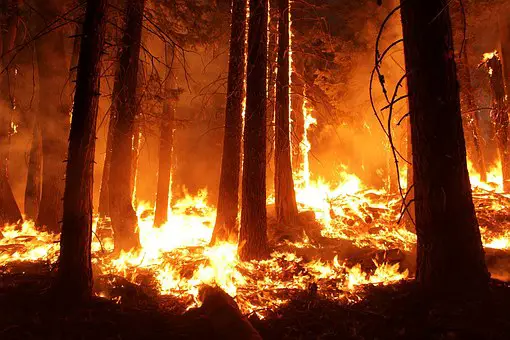 The next thing to look at will be the structure of the house itself. Most home modifications to reduce the risk of wildfires can be rather pricey. They include things like residing the home with steel, stucco, stone, or brick, replacing that shake roofing with either steel, aluminum, or Class A shingles, and enclosing the foundations with masonry or steel. When it comes to other parts of the home, there are some not quite as expensive modifications that can be made.
The next thing to look at will be the structure of the house itself. Most home modifications to reduce the risk of wildfires can be rather pricey. They include things like residing the home with steel, stucco, stone, or brick, replacing that shake roofing with either steel, aluminum, or Class A shingles, and enclosing the foundations with masonry or steel. When it comes to other parts of the home, there are some not quite as expensive modifications that can be made.
Whenever you update your home, think about using materials that are less flammable – like stone, brick, and metal for siding and roofing.
Does the chimney of your fireplace have a spark arrestor that is effective? You should annually inspect your chimney for cracks in the liner and brick. Clean wood stove and fireplace chimneys a minimum of 2 times a year.
Clean the roof and make sure the gutters are free from needles, leaves, and other debris every spring. Clean any accumulations of leaves from window sills.
Make sure that your soffits have been enclosed inside a solid barrier and that all of the vents are screened in with fine mesh to ensure that flying embers are kept out.
Radiant heat from larger wildfires can sometimes ignite curtains of fire inside homes that have large glass windows. Think about getting some shutters that can be closed for these windows.
Enclose the foundations of trailers, outbuildings, and homes, including overhangs and decks with solid sheeting that is flame resistant to keep any sparks from igniting whatever is underneath.
Ensure that you have working smoke detectors on every floor of your home. You should check them each fall to make sure that the batteries are good, and they still work.
Other Fire Hazards
Burning practices of your neighbors and you can contribute to the risk of homes being lost to wildfires.
If you decide to burn your debris and leaves, think about safer alternatives, such as composting.
Ensure that any recreational fires are created in fire safe pits or containers and are extinguished completely before you leave. Before you light any fire outdoors, check for any local restrictions and/or requirements for permits. Try not to light any fires when there is a good breeze or when the wind is blowing hard, when the humidity is low, and when the temperatures are high.
Never dispose of any sort of ashes until they are cold when you touch them.
Store your oily rags, gasoline, and other materials that are flammable in safety cans that are approved. Store those cans in your garage, or in a brick or fire-resistant metal building.
If there are branches near the power lines that are on your property, call the power company and ask them to come and prune them.
Ensure that your motorized equipment, like chainsaws and lawnmowers, have functioning and approved spark arrestors.
The main thing is to be safe, use common sense, and make sure that everything you can do has been done.
Sources
- You Tube, How to Protect Yourself from the Forest Fires
- SCDHEC, Wildfires – Protect Yourself!
- ODPEM, Protect Yourself from Fires
- InHabitat, 6 Tips to Protect Your Home from Wildfires





